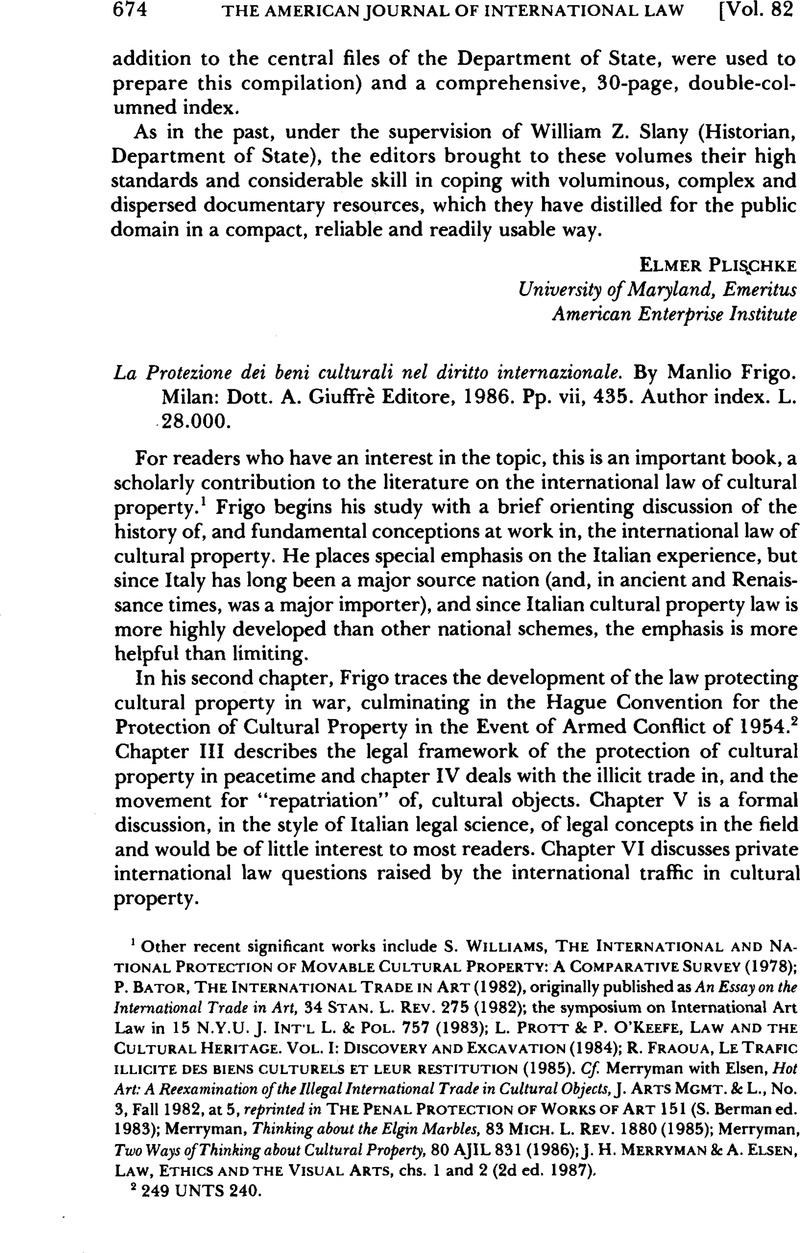No CrossRef data available.
Published online by Cambridge University Press: 27 February 2017

1 Other recent significant works include Williams, S., The International and National Protection of Movable Cultural Property: A Comparative Survey (1978)Google Scholar; Bator, P., The International Trade in Art (1982)Google Scholar, originally published as An Essay on the International Trade in Art, 34 Stan. L. Rev. 275 (1982); the symposium on International Art Law in 15 N.Y.U. J. Intl’l. & Pol. 757 (1983); Prott, L. & O’Keefe, P., Law and the Cultural Heritage. Vol. I: Discovery and Excavation (1984)Google Scholar; Fraoua, R., Letrafic Illicite Des Biens Culturels Et Leur Restitution (1985)Google Scholar. Cf. Merryman, with Elsen, , Hot Art: A Reexamination of the Illegal International Trade in Cultural Objects, J. Artsmgmt. & L., No. 3, Fall 1982, at 5 Google Scholar, reprinted in The Penal Protection of Works of Art 151 (S. Bermaned. 1983); Merryman, , Thinking about the Elgin Marbles, 83 Mich. L. Rev. 1880 (1985)CrossRefGoogle Scholar; Merryman, , Two Ways of Thinking about Cultural Property, 80 AJIL 831 (1986)CrossRefGoogle Scholar; Merryman, J. H. & Elsen, A., Law, Ethics and the Visual Arts, chs. 1 and 2 (2d ed. 1987)Google Scholar.
2 249 UNTS 240.
3 The Fraoua book, cited in note 1 and generously (in my opinion, overgenerously) reviewed by Professor Nafziger in volume 80 of this Journal at p. 751, is a much worse offender. More a tract than a study, it attempts to establish that contemporary international law already imposes, or, if it does not, should impose, two kinds of obligations: (1) an obligation on other nations to recognize and enforce source-nation cultural property export restrictions, and (2) an obligation on foreign holders of cultural objects to “repatriate” them to their nations of origin. Although both theses are zealously advanced in UNESCO and other international forums by source nations, neither is or is likely soon to become a rule of international law. A mild form of the first thesis is the principal concern of the 1972 UNESCO Convention on the Means of Prohibiting and Preventing the Illicit Import, Export and Transfer of Ownership of Cultural Property, 823 UNTS 231, reprinted in 10 ILM 289 (1971). Of the major market nations, only the United States and Canada have become parties. The second thesis has attracted even less international acceptance.
4 The quoted phrase occurs in the Preamble to the 1954 Hague Convention, supra note 2.